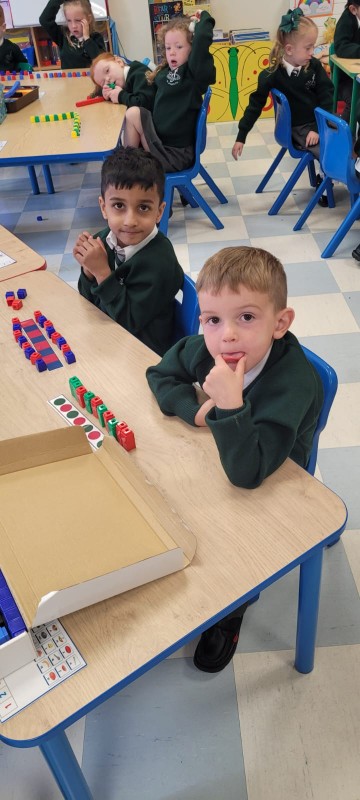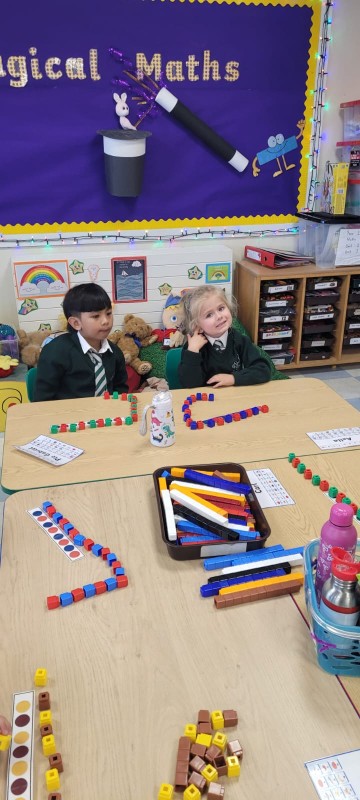Pattern learning in Year 1 ❤️💙❤️💙❤️💙
24th Sep 2024
🎈💙 🎈💙 🎈💙Primary One are working hard on copying and extending a pattern of colour. Can you find or make some patterns at home?
Children in the foundation years need to learn about patterns because patterns help lay the foundation for critical cognitive development. Here's why learning about patterns is important for young children:
1. **Cognitive Skills**: Recognising and understanding patterns strengthens children's ability to think logically and make predictions. It helps them notice relationships, similarities, and sequences, which are essential for problem-solving and reasoning.
2. **Math Readiness**: Patterns are a key component of early math skills. Identifying patterns helps children grasp mathematical concepts such as numbers, counting, and sequences, which are fundamental for later math learning like addition, subtraction, and multiplication.
3. **Language Development**: Patterns exist in language as well. Recognising patterns in speech (such as rhymes, rhythm, or repeated sounds) aids in language acquisition and improves a child’s ability to anticipate and understand language structures.
4. **Memory and Attention**: Detecting and following patterns helps develop a child’s working memory and attention to detail. These skills are crucial for following instructions, learning routines, and adapting to new tasks.
5. **Creative Thinking**: Patterns encourage creativity. When children recognise a pattern, they begin to experiment by creating their own patterns, which helps them think innovatively and boosts their ability to express themselves creatively.
In summary, learning about patterns supports a wide range of developmental skills that are fundamental for academic and life-long learning ✔️
St Josephs Primary School, 1a Slate St, Cullingtree Road, Belfast BT12 4LD Phone: 028 9032 3683
 Menu
Menu








